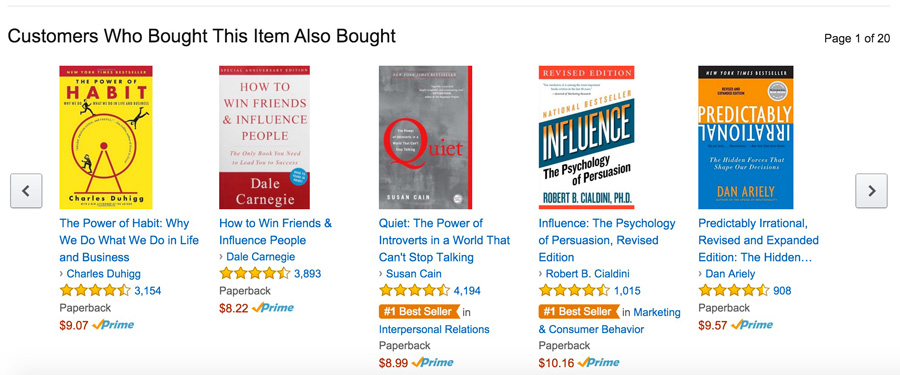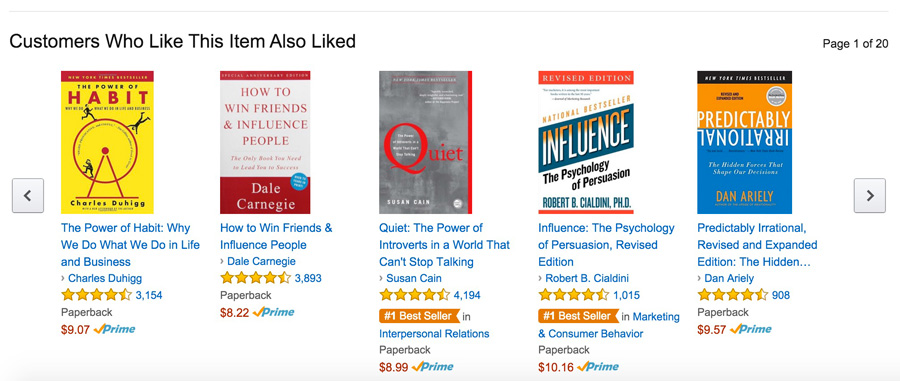Do you make this deadly recently discovered mistake when using social proof?
Relevant topics Archive, Conversion
Ouch. Last week taught me a painful lesson in humility. I learned I was just using half the power of a persuasion principle I was convinced I’d mastered perfectly: social proof.
Social proof works. Period. No question about it.
The ageless human tendency to copy the behavior and preferences of similar others is well known amongst marketers. No surprise it’s the single most popular persuasion technique today. What’s an easier way to sell more lollypops than simply stating it’s the world’s most popular lollypop?
But as the Cialdini bandwagon is starting to get crammed to the point of stagnation – seriously, just try to find a commercial website not featuring some social proof appeal – it becomes all the more important to learn more about how and why social proof actually works.
Social proof is a many-faced beast, capable of taking many forms; product ratings, testimonials, statistics, actions, desires and associations. While many marketers are indifferent to these many shades of social proof, some approaches are dramatically more effective than others.
Do words speak louder than actions?
Which social proof would make you more likely to load your shopping cart on Amazon; what others bought – or what they liked?
That’s a neat but important distinction. Social proof can take the form of action information (what others bought, which items they viewed) as well as liking information (product ratings, a testimonial stating they like the product).
Last month, an impressive scientific study by researchers from University of Florida and University of Chicago has uncovered which social proof works best. To my personal surprise, social proof stated in terms of liking (rather than actions) works best – across a wide range of products and situations.
Why actions don’t spark people to act
Strange, isn’t it? Stating what people actually do is less effective than stating what they like. An effect guiding behavior through all walks of life.
Book stores sell more books that are promoted as “Reader favorites” than “Best Sellers”.
Similarly, people are more likely to order the same meal as their friends when they talk about what they would like to order. But if one person would’ve eaten already, it’s likely her friend would actually order a different meal.
Even in the digital realms of YouTube, the number of likes (rather than views) predicts which videos people will watch next.
How come words speak so much louder than actions? According to the science, people aim to hold a balance between conforming to other people and maintaining their uniqueness. When social proof is framed in terms of concrete actions, the motivation scale tips to uniqueness, making people more likely to buy alternative but complimentary items. In other words: vivid action-geared social cues make people want to stand out more.
So should we throw action-based social proof out of the window?
No. While the superiority of liking-based social proof over its action-based counterpart is widespread, this doesn’t mean the latter doesn’t work.
It does.
Compared to no social proof at all, all forms of social proof will make the cash register ring faster and harder – for most products and services, that is.
Applying the power of liking-based social proof
But in case you have both forms of social proof at your disposal – liking and action – it would be smart to give liking the upper hand. Use taglines such as ‘favorites’ and ‘other people like’ instead of ‘best sellers’ and ‘other people bought’. Throw your review scores and social media likes on top. And feature testimonials that emphasize what people liked about your product, instead of their buying and using it.
These new insights provide exciting new testing territory. Since many ecommerce sites still feature mainly action social proof, it would be interesting to learn what a little reframing would do. Such as the example below:

versus:

What are your thoughts?
We’d love to hear your thoughts and tests about the differences in social proof appeals. Smart marketers like to share and learn every day.
Further Reading
-
To round or not to round
Pricing directly affects the consumer’s opinion about a product. A slight difference in price can have a major impact on how the consumer feels about buying - and even his or her opinion on the quality of - the product.
Now, let’s discover if, why and how you should change your prices.


